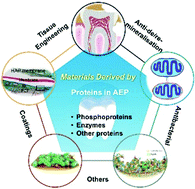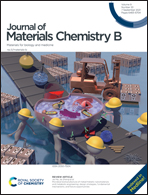Functional biomedical materials derived from proteins in the acquired salivary pellicle
Abstract
In the oral environment, the acquired salivary pellicle (ASP) on the tooth surface comprises proteins, glycoproteins, carbohydrates, and lipids. The ASP can specifically and rapidly adsorb on the enamel surface to provide effective lubrication, protection, hydration, and remineralisation, as well as be recognised by various bacteria to form a microbial biofilm (plaque). The involved proteins, particularly various phosphoproteins such as statherins, histatins, and proline-rich proteins, are vital to their specific functions. This review first describes the relationship between the biological functions of these proteins and their structures. Subsequently, recent advances in functional biomedical materials derived from these proteins are reviewed in terms of dental/bone therapeutic materials, antibacterial materials, tissue engineering materials, and coatings for medical devices. Finally, perspectives and challenges regarding the rational design and biomedical applications of ASP-derived materials are discussed.



 Please wait while we load your content...
Please wait while we load your content...